The Ultimate Guide to Heart Shaped Diamonds

An absolutely stunning 1 carat GIA certified heart shape diamond.
Nothing says “I love you” more than a heart shape diamond ring does. As a symbol of love, passion and commitment, the heart cut diamond is a popular choice of shape for engagement rings and anniversary gifts.
The heart shape diamond usually comprises of 56 – 60 facets and this number can vary depending on the cutting style (no. of pavilion facets) the cutter employs. When cut well, the heart shape diamond can display an appealing scintillation pattern and project huge amounts of fire.
However, the problem is that the majority of diamonds in the market are cut to dismal proportions and often have lackluster appearances. From first hand experience (my wife’s engagement ring features a heart shape diamond), heart cut diamonds are one of the most challenging shapes to purchase.
Why so? Unlike round brilliant diamonds where you could rely on cut grading assessments found in a gemological lab report, there is no such information available when it comes to fancy shape diamonds.
In this comprehensive guide, I’m going to show you exactly what to look out for, the ideal proportions that the diamond should have and recommended clarity/color grades to get. You are also going to see real-life examples and learn how to avoid the badly cut diamonds using my insider tips.
If you are ready to pick out a gorgeous heart shape diamond for your engagement ring, let’s get started…
Here is a list of topics we will be covering:
- Best Proportions For Heart Cut Diamonds
- What You Need to Know About Girdle Thickness in Heart Diamonds
- Importance of Symmetry in Heart Cut Diamonds
- Shape Appeal Considerations You Should Beware Of
- Examples of Well Cut vs Poorly Cut Heart Diamonds
- Recommended Color/Clarity Grades
- Ideal Length to Width Ratios For Heart Shape Diamonds
- How Much Does a Heart Shaped Diamond Cost?
- 3 Important Tips You Need to Know
- Best Heart Cut Engagement Ring Settings And Designs
- Summary And Recap: How to Select a Heart Cut Diamond
Best Proportions For Heart Cut Diamonds
The ideal proportions chart below serves as a general guideline to help you weed out poorly cut diamonds. It is compiled based on my experience in assessing thousands of heart shape diamonds.
In general, I find a depth of 58-64% and a table size of 56-62% to yield diamonds with better sparkle and brilliance. That said, these are not hard and fast numbers.
There are plenty of beautiful heart shape diamonds outside these proportions (and ugly ones as well) and you shouldn’t rely solely on a grading report to make a purchase decision.
| Excellent | Very Good | Good | Fair/Poor | |
|---|---|---|---|---|
| Table % | 56% – 62% | 54% – 64% | 53% – 66% | Outside Ranges |
| Depth % | 58% – 64% | 56% – 66% | 55% – 68% | Outside Ranges |
| Polish/Symmetry | Excellent – Very Good | Good | Outside Ranges | |
| Length to Width | 0.90 – 1.10 | 0.85 – 1.15 | 0.80 – 1.20 | Outside Ranges |
| Girdle Thickness | Thin – Thick | V. Thin – Very Thick | Outside Ranges | |
| Culet Size | None | Very Small | Small | Outside Ranges |
* Note: A video or real life inspection combined with corresponding ASET images should always take priority over the numbers found in a grading report.
What You Need to Know About Girdle Thickness in Heart Diamonds
The girdle of a diamond refers to its outermost edge and serves two basic functions; to prevent damage and to provide a surface for setting the stone. In the GIA grading lab, the girdle is examined and described based on its thinnest and thickest points.
For example, you might find a description like (medium – slightly thick) or (thin – thick) in a grading report. Technical note: the terms thin and thick are defined as a percentage of its diameter, thin being .6% or thick being 3%.
This means that for a larger sized 2 carat diamond, a girdle thickness of thin would be physically larger when compared to a 0.5 carat diamond with a girdle thickness of thin.
Unlike round diamonds where the parameters of girdle thickness play a role in determining the cut grade, it isn’t the case for fancy cuts. In fact, slightly thicker girdles can help protect vulnerable edges and corners by providing additional mechanical strength.
That said, this works like a double edged sword. The drawback of a thick girdle is that it makes the diamond look smaller since the weight is hidden in the profile view.
To illustrate this, I am going to show you a comparison of a 1.01 carat stone (thick – extremely thick) against a 0.93 carat stone (medium – thick). Feel free to click on the links in order to view the full details of these 2 stones.
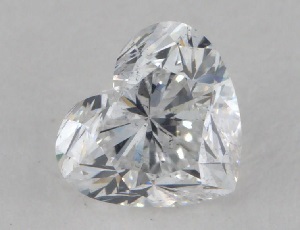
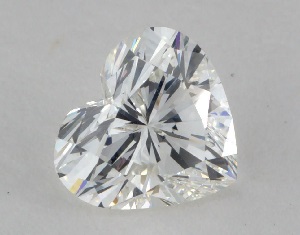
The 1.01ct diamond on the left measures up at 5.81*6.93*4.20 mm while the 0.93ct on the right measures up at 6.04*6.95*3.86 mm. This means that the smaller carat diamond LOOKS BIGGER than the heavier stone!
In this example, the cutters deliberately saved weight on the 1.01 to hit the “magical one carat” mark so that it sells for more. It shouldn’t come as a surprise that the 0.93 (F color) carat is priced at $2,850 while the 1.01 carat (plus lower G color) costs $3,510.
So, let me reveal the ugly truth of diamond cutting to you now. The majority (>90%) of fancy shaped stones are cut to retain weight and maximize profits for the jeweler/cutter at the expense of cut quality.
As a general guideline, the maximum girdle thickness I would recommend is “very thick” because this will help you avoid unnecessary “dead weight”. I would also avoid diamonds that have a uniform “extremely thick” girdle because they represent poor value and are often cut to bad proportions.
Don’t Go Too Thin Or You Have Heightened Risks of Chipping
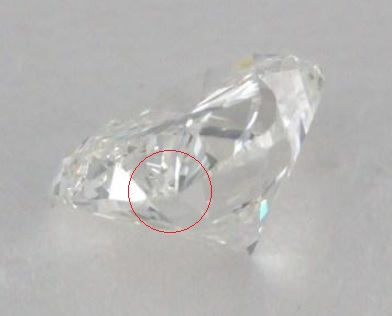
With a knife edge at the lobes, this diamond is a disaster waiting to happen.
To maximize spread and value, some people think that choosing diamonds with thin girdles is a smart move. Well, I’m sorry to say that this is a terrible idea because there are durability risks involved.
An analogy I often use is the “Goldilocks” concept – where too much or little of something isn’t ideal. You want just the right amount of girdle thickness and I recommend choosing a diamond with a girdle range between thin and thick.
Yet, there are no hard and fast rules for the upper boundary. For example, I would still consider diamonds with girdle thickness of “slightly thick” or “very thick” provided the price is right and the stone exhibits superb light performance.
However, I would avoid stones with mentions of very thin or extremely thin girdles since they are prone to chipping in that localized area.
Importance of Symmetry in Heart Cut Diamonds
With fancy heart cuts, you need to know that there are various flavors to the cutting style and not all are equally attractive. Whether a diamond looks appealing or has good optical performance depends a lot on the cutter’s skills and decisions made on the polishing wheel.
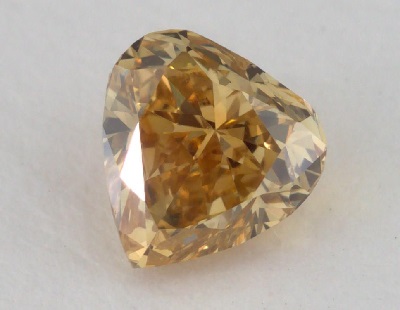
GIA graded this stone with Good symmetry and Fair polish
Believe it or not, the fancy colored brownish yellow diamond shown above is classified as a heart brilliant cut by GIA. This monstrosity looks nothing like a heart shape. Instead, it resembles a squashed pear and an ugly one at that.
In layman’s terms, symmetry refers to how well the individual facets of a diamond are proportion and aligned with one another. To a certain extent, symmetry will determine the diamond’s beauty and visual appeal.
Obviously, an odd looking shape should be avoided in most cases unless you have weird fetishes.
This brings us to the next point – what are the symmetry details you should look out for in heart shaped diamonds? One of the main considerations for a well-balanced appearance is the equivalency of the lobes on both sides of the stone.
You can check for this equivalency by imagining a central line of symmetry running through the middle of the stone. In the example below, the right lobe is significantly larger than the left lobe.
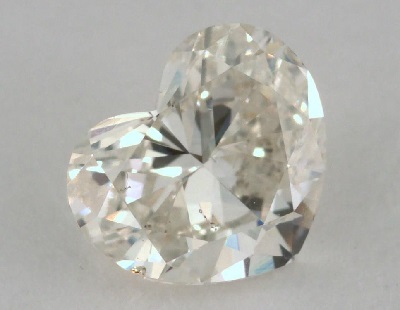
Misshapened or lop-sided lobes are a big No-No.
Comparisons of Heart Cuts with Different Symmetry Ratings
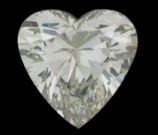
Fair
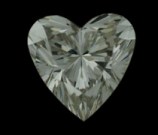
Good

Very Good
In the examples above, the diamond with “good” symmetry rating has obvious differences at the lobes which makes it an undesirable choice. In comparison, the diamond with the “fair” rating has pretty well-balanced lobes and its outline isn’t disastrous.
However, if you look carefully again, you will notice that the culet is severely off-centered underneath the table facet. This was the main reason why the diamond was penalized to a “fair” symmetry rating.
Remember, symmetry refers to how well the facets of the diamonds are aligned to each other. In some cases, this does not necessarily mean that the overall shape of the stone will be skewed. Arguably, some people may find the diamond with “fair” symmetry better looking than the one with “good” symmetry rating.
But for the record, I don’t like either of them. I generally don’t recommend going below a “Good” symmetry rating as other issues like light performance would be adversely affected.
Shape Appeal Considerations You Should Beware Of
When professional gemologists in labs like GIA or AGS grade symmetry, they examine the stone under 10X magnification. The stone is reviewed for various aspects of symmetry flaws like an off-center table, culet displacement, wavy girdles and etc…
Yet, a symmetry rating itself doesn’t tell the whole story. From the earlier comparisons made above, you can see that a higher symmetry rating doesn’t necessarily translate into a better looking stone.
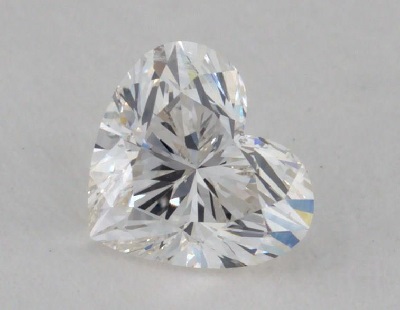
This H color VS2 0.65 carat stone is a beautiful choice.
Let me put it this way. Choosing a higher symmetry rating only “improves” the chances of finding a well cut diamond but doesn’t guarantee it. Seeing the diamond in person or via videos takes precedence when you are making a selection.
Below, I’ve listed the different shape appeal issues that can arise when diamonds aren’t cut properly. Obviously, these are issues you want to avoid when picking out a diamond.
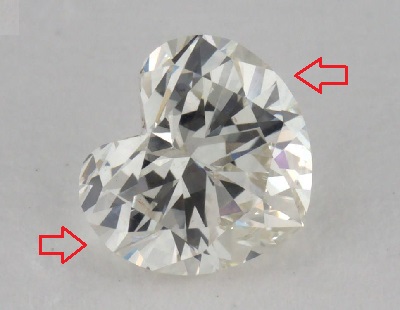
Bulged wings steer the stone towards a roundish look. Avoid them.
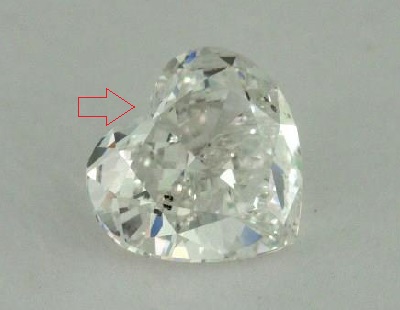
The clef and separation of the lobes aren’t clearly defined. This diamond is a bad choice.
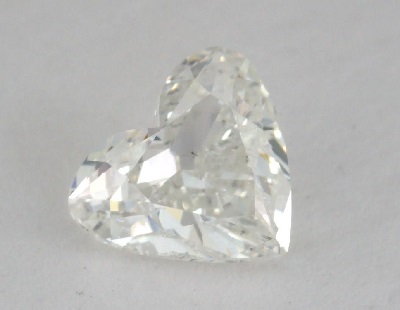
Straight flat wings like this lack the attractive look of the heart.
Examples of Well Cut vs Poorly Cut Heart Diamonds
Truly well cut heart diamonds are not easy to locate because of their limited supply and the proportions are just a guideline to get you started. Below, I will show you some examples of real life diamonds that are well cut in contrast with poorly cut ones.
Also, I want you to click on the images below and play with the interactive video listings for yourself…
Well cut heart shape diamonds with superb shape appeal and performance.
Poorly cut diamonds with poor contrast patterning, shape outline and light return.
With heart shape diamonds, I look out for overall shape appeal as well as the sparkle factor when I make selections. Vendors like Blue Nile and James Allen make it really easy to find well cut diamonds because of the unbiased, neutral videos they provide.
Recommended Color And Clarity Grades
Unlike round cut diamonds, heart shaped diamonds tend to retain body color, especially near the pointed tip. If you are color sensitive and want a diamond that faces up white, I would recommend at least a G color grade from a respectable lab like GIA.
For larger stones above 1.5 carat sizes, you would probably need an F or better color rating to get a cool, icy white looking diamond.
Here, I want to point out that personal preferences take priority. If you like warmer looking diamonds or want to set your diamond in a yellow gold setting, it would be perfectly OK to select diamonds from the near colorless or faint yellow range (H-K grades). Doing so would enable you to save you a tidy sum of cash as well.
When it comes to clarity grades, I would recommend at least an SI1 grade to get an eye-clean diamond. This is because inclusions and material flaws show up easily due to the diamond’s inherent cutting style.
On this note, I want to point out that eye-cleanliness is a very subjective issue and varies between individuals.
While I am a trained grader and have an eagle eye for details, it doesn’t mean everyone else has the same acuity as me. If you do not have sharp eyesight or aren’t sensitive to details, you may even find SI2 or I1 clarity grades to be eyeclean.

The majority of SI2 heart cut diamonds like this 1.12 carat stone aren’t eyeclean.
Here’s the bottomline. Whether you are buying online or in a local store, you should always inspect the stone under magnification.
You should never purchase a diamond based solely on a grading report and the best places to buy a fancy shape diamond are online vendors that provide video listings in neutral lighting.
Ideal Length to Width Ratios For Heart Shape Diamonds
In my opinion, the optimal length-to-width ratio for a heart brilliant should be between 0.90 and 1.10. This is the range that showcases the heart’s outline and gives it a classic appearance.

Outside of the ranges, I find that diamonds with l/w ratios smaller than 0.90 tend to look too stubby while those with l/w ratios bigger than 1.10 look too long and skinny.
At the end of the day, when it comes to choosing the l/w ratio of your diamond, there are no right or wrong selections and a lot of it depends on your own tastes.
How Much Does a Heart Shaped Diamond Cost?
Compared to round cut diamonds, the price of heart shaped diamonds are generally 15-25% lower and this means you can get a larger carat size diamond for less money. Like many other things in life, the cost of a diamond would vary depending on the quality (4Cs) it has.
For reference, I’ve compiled a price chart below to compare to prices of 1 carat heart shaped diamonds:
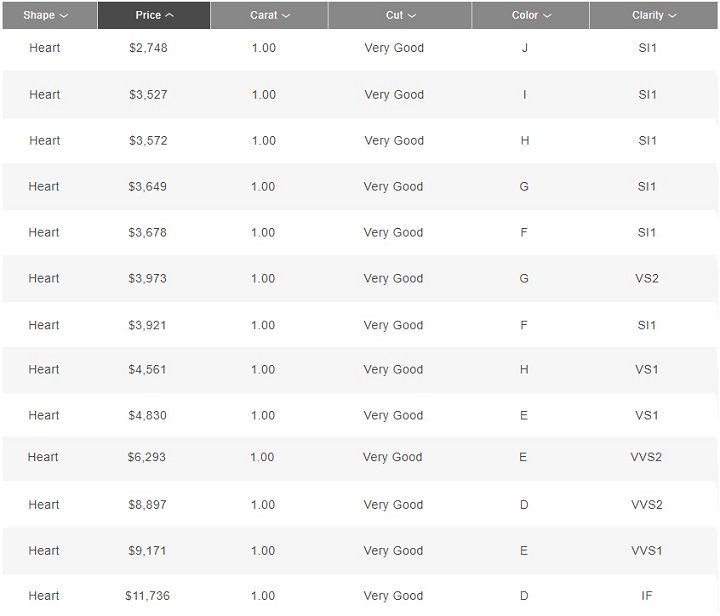
Price chart comparison of GIA certified 1ct heart shape diamonds.
As you can see, there are massive price differences when we compare lower tier color/clarity grades against the top tier grades. Prices can differ by as much as 4 times!
Although a D/IF may be desirable for people who want the best of the best, a G/VS2 diamond can look identical in the face up view. From a practical perspective, there are diminishing returns in the visual appearance of a higher color/clarity diamond.
So, if you are someone who is on a budget, consider going down in color or clarity grades to save money.
3 Important Tips You Need to Know
Tip #1 – Proper Choice of Ring Setting
Settings for heart shape diamonds would require at least 4 prongs to hold the stone securely and an additional V-shaped prong to protect the sharp tip. For diamonds smaller than 0.50 carats, a 3 prong setting (one prong on each lobe and a v-tip) would be sufficient.
Otherwise, there will be too much metal covering the small diamond and it would result in an underwhelming appearance. If you are looking for added security, bezel settings are also great choices and they also emphasize the outline of the stone.
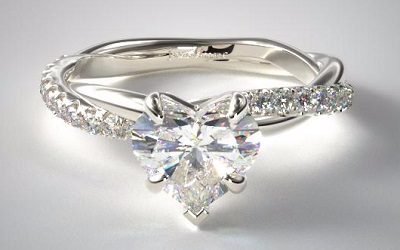
The pave setting at its best!
Tip #3 – Ditch the Local Stores And Go Online for Better Selections
Know that most brick and mortar stores carry a limited inventory of heart shaped diamonds due to its “exotic” nature. You most likely won’t find something without compromising on your specifications.
Even if the stores do carry the fancy cut, the available stock would typically be above one carat sizes and limited to one or two options.
If your budget is constrained to buying smaller sized diamonds (e.g. 0.6 or 0.7 carats), your available selections would be even more limited. In this case, venturing online to cherry pick your diamond like what I did would be a far better shopping method.
Tip #2 – SIZE is Critical in Heart Shaped Diamonds
When shopping for a heart shaped diamond, I generally don’t recommend stones that are less than half a carat (0.50) in size.
Let’s face the fact: the primary purpose of buying a fancy cut is for its distinctive shape and outline. In my opinion, the diamond’s outline will be difficult to perceive if it is physically too small.
Bear in mind that once the diamond is mounted on a ring, the prongs will cover up some areas of its surface. This makes smaller heart shaped diamonds less visually appealing.
With smaller carat size diamonds, the heart outline becomes distorted and looks more like an out-of-shaped round instead. Check out the 3 examples below and you will know what I mean. For more details, click on the ring images to see exact specifications.
The examples above should give you a better visual perspective of carat sizes on various ring setting designs. When a ring is worn on the finger and viewed from a normal distance of 10″ to 12″, the outline of a small solitaire heart diamond will not be obvious.
Best Heart Cut Engagement Ring Settings And Designs
Setting designs can make or break the appearance of a heart shape diamond ring. Personally speaking, I prioritize security and the need for a V prong to protect the vulnerable tip from breaking.
This platinum ring features 6 princess cut diamonds that are set neatly in a channel design.
Delicate cathedral style setting that makes the center stone pop and appears more prominent.
 Graduated pave melees line the shanks of this elegant looking rose gold ring in 14k gold.
Graduated pave melees line the shanks of this elegant looking rose gold ring in 14k gold.
The infinity shanks of this engagement ring design represent everlasting love and devotion.
A breathtaking halo 14k rose gold ring design that highlights the shape of the center stone.
The ring designs you have seen above are just some of my favorite designs that are available and there’s plenty more! To view 100s of different breathtaking designs, head over to Blue Nile and James Allen to browse through their ring selections.
Summary And Recap: How to Select a Heart Cut Diamond
To recap, here are my recommended guidelines for buying a heart cut diamond:
Depth: 58% to 64%
Table: 56% to 62%
Polish/Symmetry: Very Good or Excellent
Length to Width Ratio: Within a range of 0.90 to 1.10
Color: G or better
Clarity: SI1 or better
When shopping for heart cut diamonds, it is extremely important to view magnified videos of the diamond in neutral lighting conditions. With videos, you can properly assess the shape appeal and light performance of the diamond.
Related Articles
Leave A Comment



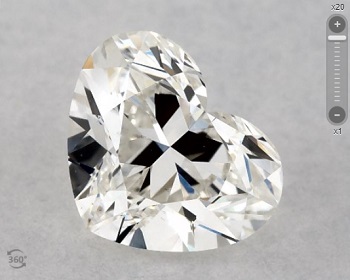
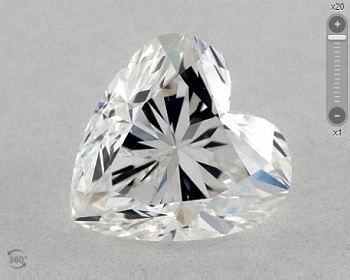
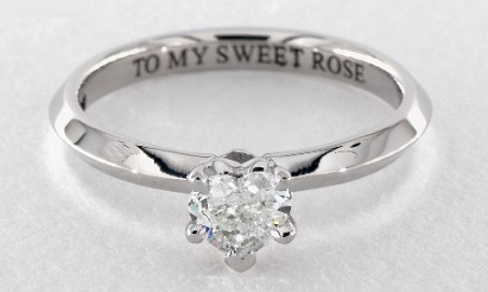
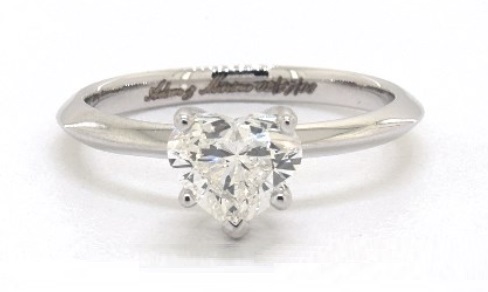
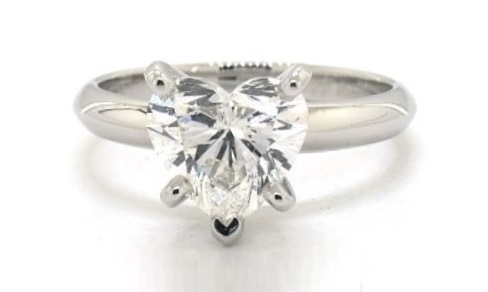
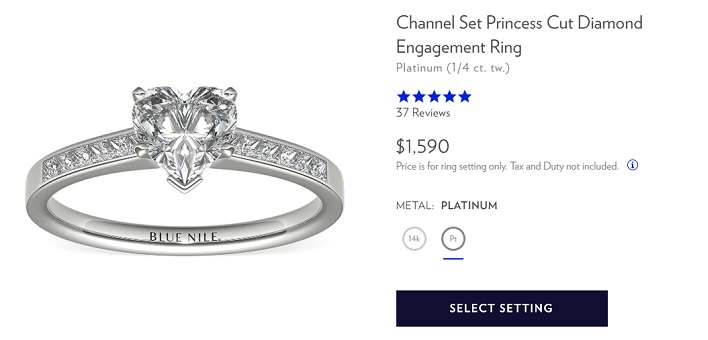

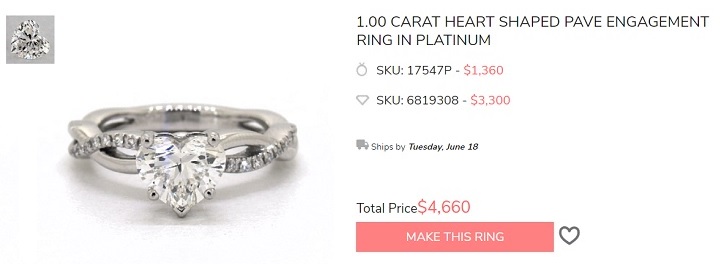

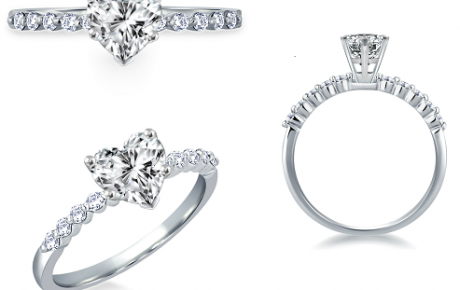
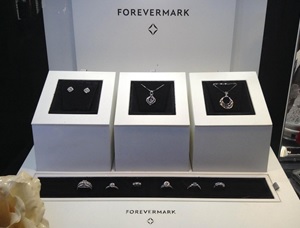
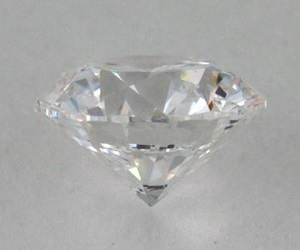
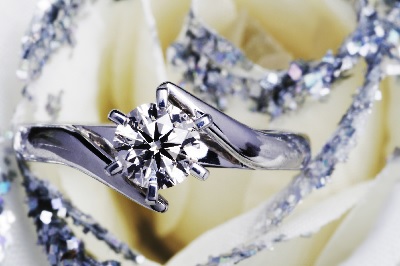









5 Comments
I’m wondering what the differences between a moissanite ring vs diamond ring are. And do you know of anyone who sells a heart shape moissanite for an engagement ring?
We’ve recently written an article about moissanite engagement rings vs diamond rings and even made a video recording of their visual appearance. That should offer some insight into questions you are asking.
As for heart shaped moissanite gemstones, I don’t know of anyone reliable who offers that. If we are talking about the mainstream shapes, then Brilliant Earth would be worth checking out.
Hi Paul, I am looking to buy my wife a 2 ct. heart for our 20th. anniverasry. Thank you for your education site. In the 4 examples of well cut vs. poor cut, I can see that the lower left (7185067) looks worse that the others, but I cannot see why you think the upper right (7168005) is better than the lower right (5057842). What specifically should I be looking at?
Thank you for your feedback and for pointing this out. You are actually right about the diamonds. The lower right example is a poor one that was listed and this is actually a pretty well cut diamond. Sorry for causing some confusion here and I’ve updated the examples for better clarity.
Who doesn’t want a bright shining diamond on their engagement ring? that too heart shape, the symbol of love. Moissanite is a great alternative to diamond. Not everyone can afford a diamond ring, and here moissanite can save your day.
According to me, moissanite looks exactly like a diamond and is affordable too.